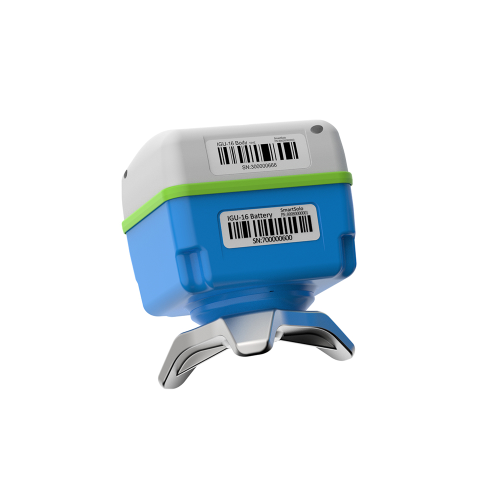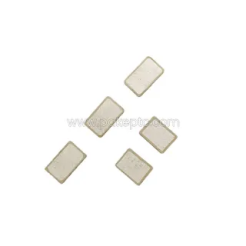Smart Seismic Sensor
Geophones, Smart Seismic Sensor, Land Cased Geophone 5hz,Geophone 10hz,Seismic Data Acquisition,Nodalseismic,Geophone Types
Product Description
IGU-16
Smart Seismic Sensor 1C
Patented Modular Design for Easy Battery Replacement,
Fast Charging and High Speed Data downloading.
No Exposed Connector. Super Reliable.
The Most Rugged Node on the Market.
Tags:
Geophones, Smart Seismic Sensor, Land Cased Geophone 5hz,Geophone 10hz,Seismic Data Acquisition,Nodalseismic,Geophone Types
You May Like:
Main Features
Lowest per Channel Cost
in the Seismic Industry
Light Weight
1.1 kg (including battery and spike)
Small Footprint
95mm X 103mm
Built-in 8 GB Non-volatile
Flash Memory
could be Expanded to 32 GB
Mobile App
Scanning & Technical Support
DT-SOLO
High-sensitivity Sensor
Techology (10Hz & 5Hz optional)
No Exposed Connector
in the Field
Optional External
Battery and Sensor
100 Days Operating Life
@ 25°C 1ms 12h ON/12h Off
Automatic Sensor Testing
and GPS Logging
Stake-less Operation
for Max Flexibility
Auto Scan Mode
for Fast Deployment
DMC, DCC, DHR
The Peripherals of SmartSolo®
Fast Data Harvesting Speed
3000 CHs @ 20 days @ 2ms in < 3.25 hrs
Highly Flexible System Configuration
Complete Software Suite
Specifications
Size and Weight
- 95mm x 103mm x 118mm (without spike)
- 1.1kg(Including internal battery and spike)
Data Storage
- 8GB
- 32GB
Recharge Time
- <3.25 hours
Operating Life@25°C
- 50 days Continuous@ 1ms
- 100 days Segmented (12hours ON/12hours SLEEP) @ 1ms
Communication
- -
External Power supply
- Exchange EB battery
Acquisition Performance 5Hz
- Natural Frequency : 5Hz
- Spurious Frequency : >170Hz
- Distortion : <0.1%@12Hz, (0° ~ 10°) vertical tilt
- Damping : 0.7
- Open Circuit Intrinsic Voltage Sensitivity : 80 V/m/s (2.03 V/in/s)
- Remark : All parameters are specified at +22°C in the vertical position for vertical geophone and horizontal position for horizontal geophone unless otherwise stated
Acquisition Performance 10Hz
- Natural Frequency : 10Hz
- Spurious Frequency : >240Hz
- Distortion : <0.1%@12Hz, (0° ~ 10°) vertical tilt
- Damping : 0.7
- Open Circuit Intrinsic Voltage Sensitivity : 85.8 V/m/s (2.18 V/in/s)
- Remark : All parameters are specified at +25°C in the vertical position for vertical geophone and horizontal position for horizontal geophone unless otherwise stated.
Physical Specs
- Seismic data channel(s) : 1
- ADC resolution : 32 bits
- Sample intervals : 1, 2, 4 milliseconds
- Preamplifier gain : 0dB to 24 dB in 6 dB steps
- Anti-alias filter : 206.5 Hz @ 2ms (82.6% of Nyquist)
Selectable - Linear Phase or Minimum Phase - DC blocking filter : 1Hz to 10Hz, 1Hz increments or DC Removed
- Operating temperature : -40°C ~ +70°C
- Waterproof : IP67
- Charging Temperature Range : +3°C ~ +45°C
Channel Performance
- Maximum Input Signal : ±2.5Vpeak @ Gain 0dB
- Dynamic Range : 116dB @ 2ms Gain 0dB
- Equivalent Input Noise : 0.71μV @ 2ms Gain 12dB(typical)
- Total Harmonic Distortion : <0.0005% @ Gain 0dB
- Common Mode Rejection : ≥100dB
- Gain Accuracy : <1%
- GPS Time Standard : 1ppm
- Timing Accuracy : ±10μs, GPS Disciplined
- System Dynamic Range : 140dB
- Frequency Response : 0 ~ 413Hz
- Remark : All parameters are specified at 2ms sample interval, 31.25 Hz, 25°C, unless otherwise indicated
Seismic Sensor Working Principle
Seismic sensors work by utilizing mass-spring systems and transduction mechanisms to convert ground vibrations into electrical signals. These signals are then processed and analyzed to extract valuable information about seismic events and the subsurface properties.
●Mass-Spring System: Seismic sensors typically consist of a mass-spring system. This system comprises a heavy mass (the seismic mass) attached to a spring or set of springs. The mass is designed to be sensitive to even the smallest ground vibrations.
●Inertial Motion: When seismic waves propagate through the Earth, they cause the ground to move back and forth or up and down. This motion is transferred to the seismic mass of the sensor.
●Relative Motion: The mass-spring system within the sensor is engineered to resist motion. As the ground moves, the inertia of the seismic mass resists this motion, causing relative displacement between the mass and the sensor's frame.
●Transduction Mechanism: To convert the relative motion into an electrical signal, seismic sensors employ various transduction mechanisms. One common method is the use of electromagnetic induction. This involves a coil of wire attached to the seismic mass and positioned within a magnetic field. As the mass moves relative to the coil, it induces an electrical current in the wire.
●Electrical Signal Generation: The induced electrical current is proportional to the displacement or velocity of the seismic mass. This electrical signal represents the ground vibrations and is then amplified, digitized, and recorded for further analysis.
●Signal Analysis: The recorded electrical signals from multiple seismic sensors are processed and analyzed to determine the characteristics of the seismic waves. This analysis includes studying the amplitude, frequency, and arrival time of the waves, providing valuable insights into the properties of the subsurface, such as the location and magnitude of seismic events or the structure of geological formations.
The Smart Seismic Sensor or Land Cased Geophone 5Hz, developed by SmartSolo Inc., offers a range of applications across the field of seismic exploration and monitoring.
Here are some key applications where this advanced technology excels:
●Oil and Gas Exploration: The Smart Seismic Sensor provides valuable insights into subsurface structures, enabling precise mapping of oil and gas reservoirs. Its high sensitivity and accuracy allow for the detection of subtle seismic signals, improving the identification of potential drilling sites and optimizing exploration efforts.
●Earthquake Monitoring: With its low-frequency response, the Land Cased Geophone 5Hz is well-suited for earthquake monitoring and early warning systems. Its ability to capture seismic activity with precision aids in assessing earthquake magnitudes, understanding fault behavior, and enhancing overall seismic monitoring capabilities.
●Environmental and Geotechnical Studies: The Smart Seismic Sensor is instrumental in environmental and geotechnical studies, providing critical data for assessing the stability of infrastructure, investigating ground conditions, and monitoring land movements. Its reliability and robustness make it a valuable tool for projects involving soil analysis, landslides, and construction in seismically active areas.
●Structural Health Monitoring: The Land Cased Geophone 5Hz is used in structural health monitoring to assess the integrity and performance of buildings, bridges, and other structures. Monitoring vibrations and ground movements, it helps identify potential weaknesses, ensuring the safety and longevity of structures.
●Mining and Quarrying: The Smart Seismic Sensor plays a crucial role in mining and quarrying operations. It assists in mapping subsurface geological structures, monitoring ground stability, and optimizing blasting processes. The sensor's accuracy and durability make it an essential tool for ensuring safe and efficient mining practices.
●Research and Academic Studies: The Smart Seismic Sensor and Land Cased Geophone 5Hz find extensive use in various research and academic studies related to seismology, geophysics, and geology. Their advanced features and reliable performance enable researchers to collect high-quality seismic data for in-depth analysis, contributing to advancements in the understanding of Earth's subsurface.
The Smart Seismic Sensor and Land Cased Geophone 5Hz from SmartSolo Inc. demonstrate their versatility and effectiveness across these applications. With their advanced technology, high sensitivity, and robust construction, these tools empower professionals in diverse industries to make informed decisions, optimize operations, and gain a deeper understanding of the Earth's subsurface dynamics.



